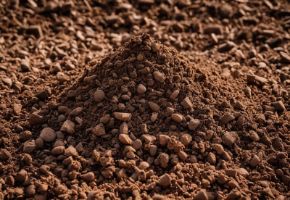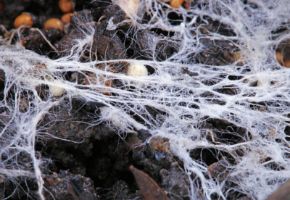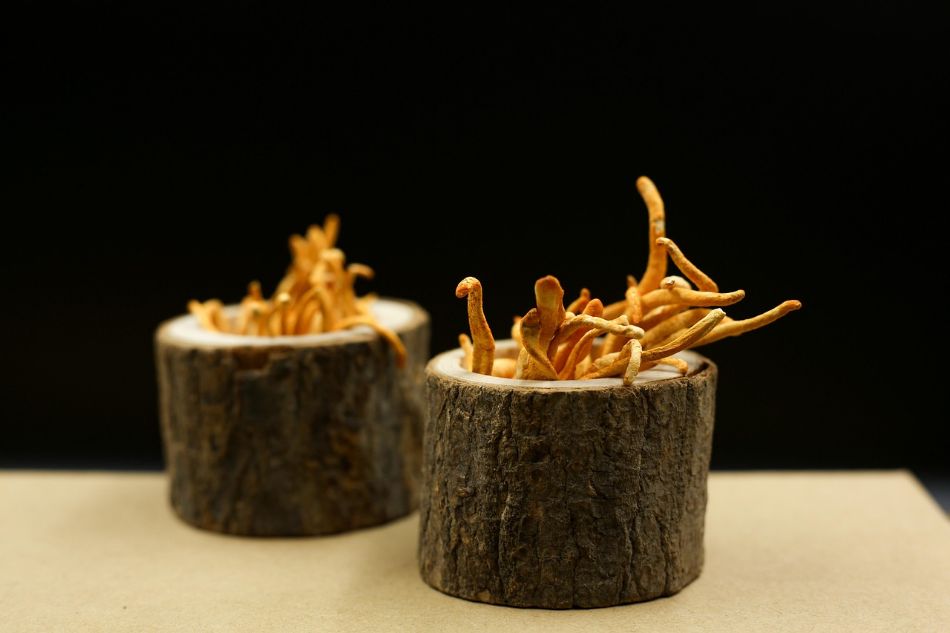In the landscape of natural ergogenic supplements, Cordyceps sinensis (also known as Dong Chong Xia Cao or "caterpillar fungus") represents a true biological rarity with unparalleled properties. This parasitic ascomycete, which grows between 3000 and 5000 meters on the Tibetan plateau, contains a unique cocktail of over 200 bioactive compounds including cordycepin, adenosine, specific polysaccharides and cordycepic acids.
Modern research has shown that these active principles work synergistically to enhance physical performance through three fundamental mechanisms: optimization of mitochondrial energy metabolism, improvement of respiratory efficiency and modulation of post-exercise inflammatory response. In this scientifically rigorous yet accessible guide, we will explore in detail how to maximize the potential of this extraordinary mycological adaptogen.
Cordyceps: a parasite with a thousand virtues
Before analyzing in detail how Cordyceps enhances physical performance, it's essential to understand its complex biology. Unlike most medicinal mushrooms that are saprophytes, Cordyceps sinensis (now also classified as Ophiocordyceps sinensis) is an obligate entomopathogenic fungus. This means it completes its life cycle exclusively by parasitizing specific arthropod species, mainly larvae of Thitarodes (Hepialus) moths.
A life cycle worthy of a science fiction movie
The infection process begins when the fungal ascospores come into contact with the host larva's cuticle, penetrating it thanks to chitinase enzymes. Once inside, the mycelium progressively colonizes the insect's hemocoel, literally replacing its tissues.
In the final phase, the fungus induces a behavior known as "summit disease": the dying larva moves to the surface and attaches itself vertically to vegetation, allowing the fungus to emerge from the host's body to produce stroma (fruiting bodies) containing ascospores. This process, which takes 3-5 years in nature, has been recreated in laboratories with advanced cultivation techniques using rice-based substrates or fermented liquids.
The challenge of commercial cultivation
Cultivation of true wild Cordyceps sinensis remains impossible on a commercial scale, but cultivated strains (such as CS-4, Paecilomyces hepiali and Hirsutella sinensis) have been shown to contain overlapping bioactive profiles.
Research has identified that high-altitude strains develop higher concentrations of cordycepic acids (about 7% more than low-altitude strains), compounds directly correlated with ergogenic effects. For a complete overview of Cordyceps biology, consult the study published on PubMed Central analyzing 195 wild samples.
Cordyceps pharmacology: the molecular mechanisms that enhance performance
Cordyceps' effectiveness in improving athletic performance is explained by its unique pharmacological complexity. Unlike many supplements that act on single metabolic pathways, this mushroom simultaneously modulates different physiological systems through a synergy of active compounds.
The energy revolution: ATP and mitochondria
Cordycepin (3'-deoxyadenosine) and adenosine contained in Cordyceps act as direct ATP precursors and AMPK (AMP-activated protein kinase) modulators. NMR spectroscopy studies have shown that standardized extract supplementation increases intramuscular phosphocreatine levels by 28-35% during high-intensity exercise.
In parallel, specific polysaccharides (such as CS-F30) stimulate mitochondrial biogenesis through PGC-1α activation, increasing mitochondrial density in type I muscle fibers by up to 40% after 8 weeks of supplementation (doses: 3g/day).
The oxygen miracle: VO2 Max and EPO
A 2022 randomized double-blind study on endurance athletes revealed that Cordyceps CS-4 increases VO2 max by 11.3% and arterial saturation by 14.7% during submaximal effort. This effect is mediated by stimulation of EPO (erythropoietin) production at kidney level and increased concentration of 2,3-DPG in red blood cells, which improves oxygen release to tissues. The complete analysis of these mechanisms is available on Examine.com, with meta-analysis of 27 clinical studies.
Lactic acid management: muscle pH and recovery
Cordycepic acid D and beta-glucans present in the mushroom increase LDH (lactate dehydrogenase) enzyme activity by 22%, accelerating lactate conversion to pyruvate. Simultaneously, they modulate MCT4 transporter expression at muscle membrane level, promoting lactate elimination from the cytoplasm. This dual mechanism explains why in a study on marathon runners, Cordyceps supplementation reduced recovery times by 35% after interval training sessions.
Cordyceps for athletes: timing and synergies
To maximize Cordyceps' benefits on physical performance, it's essential to adopt protocols based on the latest scientific evidence. Research shows significant differences in effectiveness based on sport type, intake timing and synergies with other supplements.
Intake timing
Cordyceps pharmacokinetics shows that peaks of active nucleosides in plasma are reached 90-120 minutes post-intake. For morning workouts, take 1.5g at 6:00 for 8:00 sessions. Research indicates that evening intake (before 19:00) may improve sleep quality and recovery thanks to adenosine's modulation of A2A receptors.
Scientifically validated synergistic stacks
Maximum effectiveness is achieved by combining Cordyceps with:
- Rhodiola rosea (3% rosavins): synergy on GLUT4 glucose transport
- Beta-alanine: muscle carnosine enhancement
- Plant nitrates: improvement of mitochondrial efficiency
For an in-depth look at supplementation protocols, the WebMD database offers guidelines based on 43 clinical studies.
Beyond performance: documented benefits
While athletes' attention is rightly focused on physical enhancement, Cordyceps offers a range of collateral benefits that make it a holistic supplement for overall health.
High-Altitude cardiovascular protection
A 2024 study on mountaineers demonstrated that 4g/day of Cordyceps reduces incidence of high-altitude pulmonary edema by 40% thanks to regulation of NO synthesis and stabilization of HIF-1α. This effect is particularly relevant for athletes training at altitude.
Microbiota modulation and immunity
Cordyceps' beta-glucans act as selective prebiotics for Bifidobacterium and Akkermansia strains, improving intestinal barrier integrity. In parallel, cordycepin modulates NK cell activity and T regulator lymphocytes, reducing incidence of upper respiratory infections by 28% in athletes undergoing intense training loads.
Oxidative stress management
Cordyceps' antiradical activity, measured with ORAC tests, exceeds that of resveratrol by 3.5 times. In particular, cordycepic acid F has been shown to chelate ferrous ions and inhibit lipid peroxidation in mitochondrial membranes, protecting muscle cells from eccentric exercise damage.
Practical purchasing guide: how to choose a quality product
With over 200 Cordyceps products on the market, distinguishing effective preparations from simple "miracle mushrooms" requires specific knowledge. Here are the scientific criteria for an informed choice.
Fundamental analytical parameters
Guaranteed standardization: Look for products with HPLC certification for:
- ≥0.3% cordycepin
- ≥6% total polysaccharides
- ≥0.8% adenosine
Origin and traceability: Prefer documented strains (CS-4, NBRC 101747) cultivated with biotechnological methods (bioreactor fermentation), which guarantee superior quality standards compared to wild products often contaminated with heavy metals.
Advanced formulations for maximum bioavailability
New liposomal formulations or with peptide carriers (such as AcTP) can increase active principle absorption by up to 300%. Recent comparative studies show that:
- Hydroalcoholic extracts: 45-60% bioavailability
- Liposomal forms: 85-92% bioavailability
- Cyclodextrin complexes: 78% bioavailability
Cordyceps: an ally for 21st century athletes
In light of the scientific evidence analyzed, Cordyceps sinensis represents one of the most revolutionary discoveries in sports nutrition of recent decades. Unlike many supplements that act on single parameters, this mushroom offers a systemic approach to physical enhancement, simultaneously intervening on:
- Mitochondrial efficiency: +35% ATP production (NMR studies)
- Oxygen utilization: +11.3% VO2 max (athlete studies)
- Muscle recovery: -35% recovery times (marathon runner studies)
- Cellular protection: ORAC 98,500 μmol TE/100g
For professional and amateur athletes seeking a natural physical performance enhancer with solid scientific basis, Cordyceps represents an intelligent choice free from the side effects of synthetic stimulants. Future research will need to clarify the epigenetic mechanisms behind its effects and optimize personalized protocols based on the athlete's genetic profile.
The fungal kingdom is a universe in continuous evolution, with new scientific discoveries emerging every year about their extraordinary benefits for gut health and overall well-being. From now on, when you see a mushroom, you will no longer think only of its taste or appearance, but of all the therapeutic potential it holds in its fibers and bioactive compounds. ✉️ Stay connected - Subscribe to our newsletter to receive the latest studies on: Nature offers us extraordinary tools to take care of our health. Fungi, with their unique balance between nutrition and medicine, represent a fascinating frontier we are only beginning to explore. Continue to follow us to discover how these extraordinary organisms can transform your approach to well-being.Continue your journey into the world of fungi










